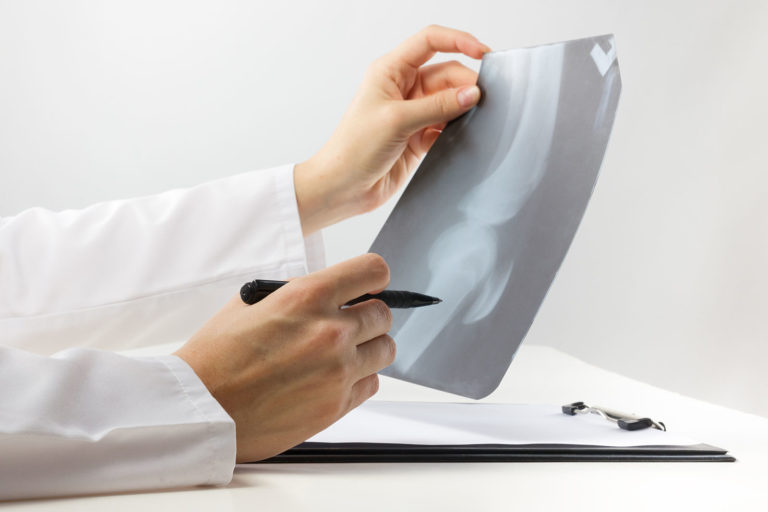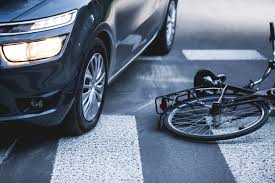If you’re an electric bike rider in Arizona, it’s important to understand the laws and regulations that apply to your mode of transportation.
Electric bikes, also known as e-bikes, are becoming increasingly popular in the state, but many riders are still unsure about the rules they need to follow.
In this article, we’ll explore the laws for electric bikes in Arizona, including who is usually at fault if an e-bike is involved in an accident and whether the laws are different for e-bikes compared to non-electric bicycles.
One of the most important things to know about e-bikes in Arizona is that they are classified as bicycles, not motor vehicles.

This means that they are subject to many of the same laws and regulations as traditional bicycles.
However, there are some key differences, such as the fact that e-bikes are allowed to travel at higher speeds and are equipped with motors that provide additional power.
Understanding these differences is essential for staying safe and avoiding legal issues while riding your e-bike.
If you’re involved in an accident while riding your e-bike, determining fault can be a complex process.
Factors such as the speed of the bike, the actions of other drivers, and the condition of the road can all play a role in determining liability.
In the next section, we’ll explore how negligence is determined in motorized bike accidents and what steps you can take to prove liability if you’re involved in an e-bike accident in Arizona.
Why Contact the Law Gang
If you were injured in an e-bike accident in Arizona then you deserve to be compensated. That is precisely what insurance is for and why it exists.
Similar to other bicycle accidents, we here at the Law Gang know that after a car wreck, it can be quite difficult for an everyday person to get the compensation benefits they are entitled to.
As a victim you face mounting medical bills which seem to get more expensive by the day.
In addition, you have pain, suffering and many out of pocket expense that major medical insurance usually does not cover (gas money, missed time from family and work) and of course will lose a paycheck or more if you are unable to work.
Battling the insurance companies is not easy. They have teams of high priced lawyers and adjusters.
You need a lawyer working for you!
The Law Gang will help you and can do the dirty work of negotiation and will gather as much evidence as possible which may or may not include obtaining traffic footage (when available). If the police report is incorrect we may also be able to assist.
Contact us today.

Electric Bike Laws in Arizona
If you are planning to ride an electric bike in Arizona, it is important to know the laws and regulations that apply to them.
Electric bikes, also known as e-bikes, are becoming increasingly popular due to their convenience and ease of use. However, they are subject to specific laws that differ from those of non-electric bicycles.
Comparison with Non-Electric Bicycle Laws
The laws for e-bikes in Arizona are different from those of non-electric bicycles. According to Arizona law, an electric bike is considered a bicycle if it meets certain criteria.
For example, the bike must have pedals that can be used to propel it, a motor that is no more than 750 watts, and a maximum speed of 20 miles per hour on level ground.
Non-electric bicycles, on the other hand, do not have a motor and are typically powered by the rider’s own physical effort.

They are subject to different laws and regulations, such as helmet requirements and restrictions on where they can be ridden.
Nasty E-Bike car accidents can happen anywhere from The Stack to Camelback but are most common on side streets such as:
E-Bike Classification and Regulation
In Arizona, electric bikes are classified into three categories based on their maximum speed and the level of assistance provided by the motor. These categories are:
- Class 1: These e-bikes have a motor that provides assistance only when the rider is pedaling and stops providing assistance when the bike reaches a speed of 20 miles per hour.
- Class 2: These e-bikes have a motor that can be used to propel the bike even if the rider is not pedaling, but the motor stops providing assistance when the bike reaches a speed of 20 miles per hour.
- Class 3: These e-bikes have a motor that provides assistance only when the rider is pedaling and stops providing assistance when the bike reaches a speed of 28 miles per hour.
In Arizona, e-bikes are subject to specific regulations, such as helmet requirements, restrictions on where they can be ridden, and the need for a valid driver’s license or permit to operate certain types of e-bikes.
It is important to familiarize yourself with these regulations before riding an e-bike in Arizona.
Overall, understanding the laws and regulations (including statute of limitations) that apply to electric bikes in Arizona is essential for safe and legal riding.

By following these rules, you can enjoy the convenience and benefits of e-bikes while minimizing the risk of accidents and legal issues.
Servicing the counties of:
- Maricopa
- Pinal
- Coconino
We are here to help in these or any other county within the state of Arizona for any e-bike injury.
Determining Fault
When an accident involving an electric bicycle occurs, determining who is at fault can be a complex process. It is important to understand the common causes of e-bike accidents, as well as the legal concepts of negligence and liability.
Common Causes
Some common causes of e-bike accidents include:
- Distracted driving
- Failure to yield the right of way
- Speeding
- Improper lane changes
- Driving under the influence of drugs or alcohol
It is important for both e-bike riders and drivers of motor vehicles to be aware of these common causes and take steps to avoid them.
The Law Gang can help with your e-bike accident claim if it happened in:
- Mesa
- Surprise
- Peoria
- Or any other location in Arizona
Negligence and Liability
Negligence is a legal concept that refers to the failure to exercise reasonable care in a particular situation. In the case of e-bike accidents, negligence can apply to both the e-bike rider and the driver of the motor vehicle.
Liability refers to legal responsibility for an accident. In e-bike accidents, liability can be determined based on the concept of negligence.
If one party was negligent and that negligence caused the accident, that party may be held liable for damages.
Proving Liability
To prove liability in an electric bicycle accident, it is important to gather evidence such as witness statements, police reports, and photographs of the accident scene.
It may also be necessary to hire an expert witness, such as an accident reconstructionist, to provide testimony about the cause of the accident.
In addition, it is important to understand the laws related to e-bikes in Arizona. This can include understanding the rules of the road, as well as any specific laws related to e-bikes.
Overall, determining fault in e-bike accidents can be a complex process. However, by understanding the common causes of e-bike accidents and the legal concepts of negligence and liability, you can better protect yourself and others on the road.
Injuries and Accountability
Common Injuries
Electric bicycles are a popular mode of transportation in Arizona, but they can also be dangerous.
Injuries sustained from an e-bike accident can range from minor cuts and bruises to more serious injuries such as broken bones, head / brain injuries, and spinal cord injuries.
Head injuries are particularly common in e-bike accidents, and riders are strongly advised to wear a helmet at all times.
In the event of an accident, a helmet can greatly reduce the risk of serious head injury.
Other common injuries include road rash, which is caused by the friction between the skin and the pavement, and broken bones, which can be caused by the impact of the accident.
Bicyclist Fault and Contributory Negligence
In Arizona, the law requires that all cyclists follow the same traffic laws as motorists. This means that if a cyclist is at fault for an accident, they can be held liable for any damages or injuries that result.
However, it is important to note that even if a cyclist is partially at fault for an accident, they may still be able to recover damages.
Arizona follows a system of comparative negligence, which means that damages are apportioned based on the degree of fault of each party involved in the accident.
For example, if a cyclist is found to be 30% at fault for an accident, they may still be able to recover 70% of the damages they incurred.
It is important for both cyclists and motorists to be aware of their responsibilities on the road and to take all necessary precautions to avoid accidents.






